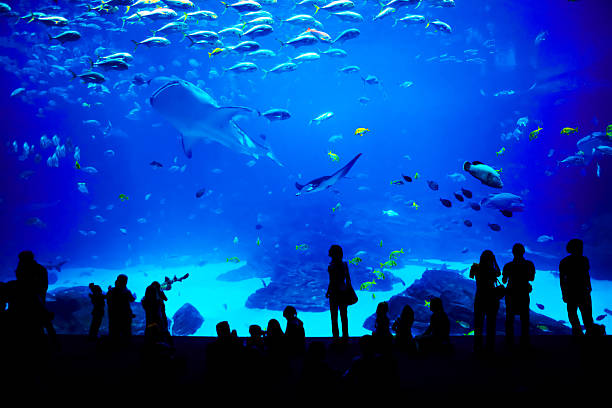The Science of Salinity: A Beginner’s Guide to Saltwater Aquariums

People looking at fishes in biggest aquarium in the world. Atlanta, Georgia.
The Importance of Salinity in Saltwater Aquariums
As a new saltwater aquarium hobbyist, you’ll quickly learn that maintaining proper water parameters is essential. While it may seem daunting at first, understanding salinity, pH, alkalinity, calcium, and other aspects of your tank water will empower you to create a thriving underwater environment. In this beginner’s guide, you’ll gain knowledge on the science behind saltwater aquariums. From mixing synthetic sea salt and monitoring gravity to balancing alkalinity and calcium, you’ll become well-versed in the most important water qualities to test and adjust. With the right information and a few key pieces of equipment, you’ll be testing and tweaking water parameters like a pro in no time. Let’s dive in and demystify the science of salinity.
Measuring and Maintaining Proper Salinity Levels
Maintaining proper salinity levels is crucial for the health of marine fish and invertebrates in saltwater aquariums. Salinity refers to the concentration of dissolved salts in the water, measured as “parts per thousand” or ppt. Most saltwater aquariums require a salinity between 1.022 to 1.026 ppt to replicate ocean conditions.
– Using a hydrometer or refractometer, test the salinity when first setting up the aquarium and after each water change. Fluctuations in salinity can stress fish and invertebrates, so closely monitor levels and make minor adjustments with salt mixes or freshwater as needed.
– When performing water changes, prepare replacement water in advance and adjust salinity to match the aquarium. Never drastically change the salinity, as rapid shifts threaten the lives of tank inhabitants. For the most stable conditions, change no more than 25% of the total volume during water changes.
– The salinity of natural seawater averages 35 ppt, but home aquariums tend to range from 32 to 38 ppt depending on the types of fish and invertebrates. Research the ideal salinity range for your specific tank population and invest in a high-quality salt mix to properly replicate ocean water.
– Other water parameters like pH, ammonia, nitrates, and phosphates also significantly impact the health of a saltwater aquarium. Test all parameters regularly and perform necessary maintenance to provide the best environment for your marine life.
With close monitoring of salinity and other water parameters, you can maintain a thriving saltwater ecosystem. Stability is key, so be vigilant and make any needed adjustments gradually. Your fish and invertebrates will thank you!
FAQs on Salinity for Beginner Saltwater Aquarium Owners
To keep your saltwater aquarium healthy, monitoring and adjusting salinity is crucial. Salinity refers to the amount of dissolved salt in the water and is measured using a hydrometer or refractometer. For most marine fish and invertebrates, aim for a specific gravity between 1.020 to 1.026 at 77°F or 25°C.
– Use a hydrometer or refractometer to test the salinity of your tank water at least once a week. Calibrate your measuring device as directed before the first use and then regularly to ensure accurate readings. Compare your measurement to the recommended range and make adjustments as needed.
– Lower the salinity by performing a partial water change using deionized or reverse osmosis water. Replace about 10-15% of the total tank volume at a time. Re-test the salinity in a few hours and repeat if necessary. Raise the salinity slowly by adding pre-mixed synthetic sea salt. Dissolve the salt in a bucket of tank water and add it to the tank in small amounts, re-testing frequently.
– Factors like water temperature, evaporation, and the aquarium inhabitants can impact salinity. Warmer water holds less oxygen so salinity may rise in summer. Evaporation also removes pure H2O, increasing salinity. The respiration and waste of aquarium occupants contributes to changes as well.
– Maintaining stable conditions is key to success. Use equipment like auto-top off systems, protein skimmers or canister filters and perform regular maintenance. Monitor closely when adding or removing things from the tank. Consistency and patience will allow you to keep your tank healthy and your fish happy.
With diligent water testing and gradual adjustments, properly controlling the salinity will become second nature. The rewards of a thriving miniature ocean ecosystem are well worth the effort.















